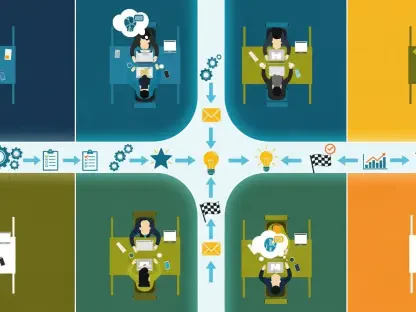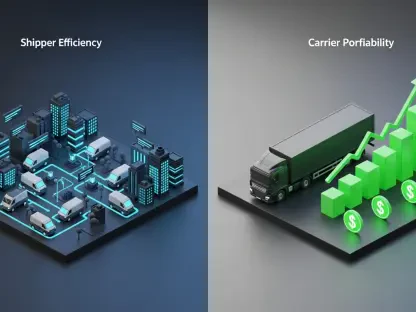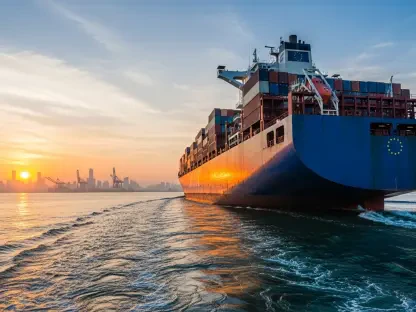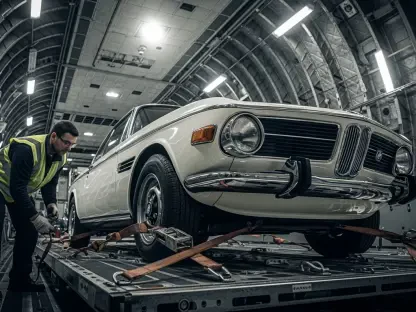Allow me to introduce Marco Gaietti, a veteran in business management with decades of experience in management consulting. Marco’s expertise spans strategic management, operations, and customer relations, making him the perfect person to dive into the intricacies of supply chain innovations in the automotive industry. Today, we’re exploring how a strategic separation of manufacturing and logistics has transformed operations for a major automotive supplier at their new vendor-managed inventory hub in Wrocław, Poland. Our conversation touches on the motivations behind this bold move, the strategic advantages of the location, the role of technology and partnerships in meeting tight delivery schedules, and the broader impact on efficiency and sustainability goals.
Can you explain the driving factors behind separating manufacturing from logistics for a company like L&L Products at their Polish partner facility?
Certainly. The core issue often comes down to specialization. When a manufacturing partner is tasked with both producing parts and managing logistics, it can stretch their capabilities thin. For L&L Products, their partner PolPlas excelled at manufacturing but struggled with the complexities of logistics, especially when serving major automotive manufacturers across Europe. This led to inefficiencies, like unnecessary back-and-forth shipments between Poland and their headquarters in France. Separating these functions allowed each entity to focus on their strengths—manufacturing for PolPlas and streamlined logistics through a dedicated hub managed by a specialized partner. It’s about creating a system where each piece of the puzzle operates at its best.
What specific logistics hurdles were they facing before this separation, and how did those affect their operations?
Before the change, the logistics process was a bit of a mess. Parts were being shipped directly from the manufacturing site to customers, often with convoluted routing that added time and cost. Imagine sending materials back to France just to redirect them to Poland or elsewhere in Europe—it was inefficient and created delays. These hiccups directly impacted their ability to meet the stringent just-in-time delivery schedules demanded by automotive giants. In an industry where a production line stoppage can cost thousands of dollars per minute, those delays were a significant risk to both reputation and bottom line.
Why was Wrocław selected as the strategic location for this new inventory hub?
Wrocław was a smart choice for several reasons. It’s positioned in a way that significantly shortens delivery distances to a primarily German customer base, cutting off hundreds of kilometers compared to previous routes. Its proximity to the E33 trans-Europe motorway corridor also ensures smooth connectivity across the continent, making it easier to manage tight delivery windows. Beyond geography, the area likely offered infrastructure and a business environment conducive to logistics operations, which is critical for a hub of this scale. It’s about being as close as possible to the action while maintaining access to key transport networks.
How does the partnership with a logistics provider enhance operations at the Wrocław facility?
Partnering with a logistics expert like Geodis brings a level of professionalism and scalability that’s hard to achieve in-house, especially for a company whose core focus isn’t logistics. They manage the day-to-day operations of the 2,600 square meter facility, handling everything from inventory storage to quality control. Their advanced warehouse management system integrates seamlessly with the company’s existing systems in France, ensuring that data and physical flows are perfectly aligned. This kind of partnership allows for real-time tracking and quick adjustments, which are vital in an industry with zero margin for error.
Can you elaborate on how such a facility meets the incredibly tight delivery schedules demanded by automotive manufacturers?
Meeting delivery windows as narrow as one minute—yes, one minute—for a major client like Stellantis requires precision at every step. It starts with meticulous planning and a robust infrastructure at the hub, including dedicated loading docks and quality control areas to prevent delays from defective parts. They also maintain a high accuracy rate, like 99.5% for packaging and labeling, right out of the gate. Contingency plans are key too—think small vans navigating local roads when highways are jammed or even leveraging nearby Wrocław Airport for urgent shipments. It’s a combination of technology, process discipline, and creative problem-solving.
What can you tell us about the timeline and approach to setting up a hub like this?
Setting up a facility like the one in Wrocław is no small feat and requires a well-thought-out timeline. Typically, it begins with a tender process to select the right logistics partner, followed by months of planning and implementation. In this case, they opted for a phased approach, gradually onboarding customers over a few months rather than flipping the switch all at once. This helps manage risk and allows for adjustments as issues crop up. It’s a pragmatic way to ensure that the transition doesn’t disrupt existing supply chains while still pushing toward full operational capacity.
How have faster delivery times and shorter transport routes impacted both customers and sustainability objectives?
The impact of faster deliveries—shaving up to 10 hours off shipment loops—is huge for customers. It means they get parts sooner, reducing the risk of production delays and improving their own operational efficiency. From a sustainability perspective, shorter routes directly translate to lower fuel consumption and reduced carbon emissions. This aligns with broader goals, like aiming for carbon neutrality by 2030. It’s a win-win: customers benefit from speed and reliability, while the company takes meaningful steps toward environmental responsibility.
What role does a logistics partner’s expertise play in navigating the complexities of automotive supply chains?
Automotive supply chains are notoriously complex, with just-in-time and just-in-sequence demands that leave no room for error. A logistics partner brings specialized skills to the table—things like absorbing operational complexity, training cross-functional teams, and tailoring solutions to very specific needs. Their ability to develop new processes on the fly and integrate systems ensures that even the most demanding requirements are met without a hitch. It’s like having a seasoned navigator on a tricky road trip; they know the shortcuts and how to avoid the pitfalls.
Looking ahead, what is your forecast for the future of logistics hubs in the automotive industry?
I think we’re going to see more companies adopting this model of specialized logistics hubs, especially in industries like automotive where timing is everything. As supply chains become more global and complex, the need for regional hubs that can act as agile, efficient buffers will only grow. Technology will play a bigger role—think AI-driven forecasting and automation in warehouses. Sustainability will also drive innovation, with hubs designed to minimize environmental impact through optimized routes and energy-efficient operations. It’s an exciting space, and I believe we’re just scratching the surface of what’s possible.









